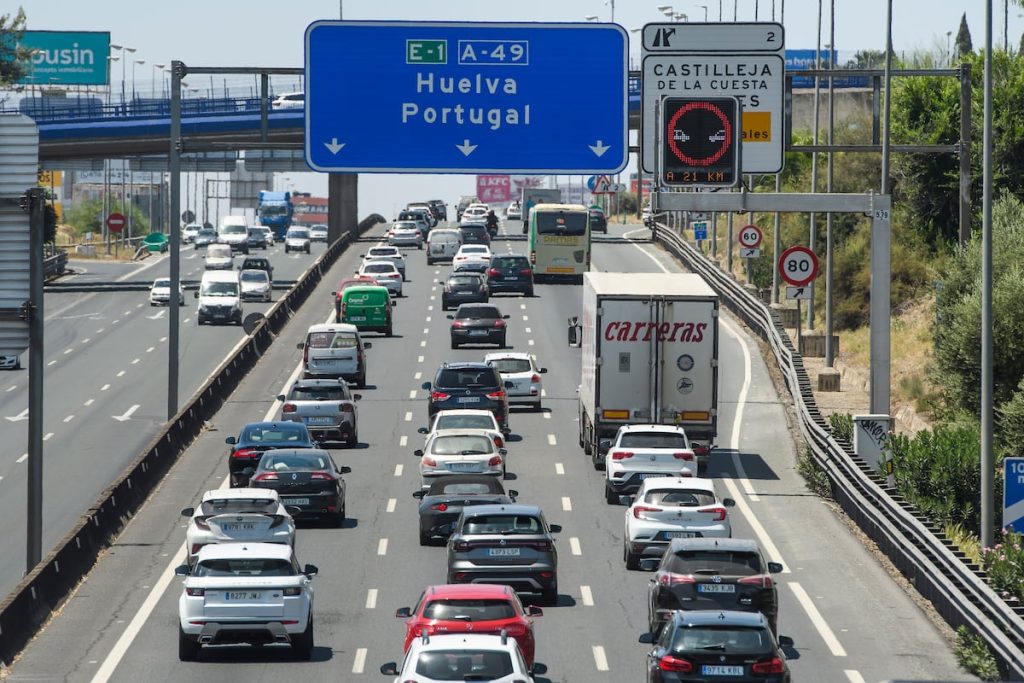The General Directorate of Traffic (DGT) predicts that during the so-called Special Operation August 1st, which begins on Wednesday, July 31 at 3:00 p.m. and ends on Thursday, August 1 at 11:59 p.m., there will be 3.1 million trips on the roads throughout Spain. August is the busiest month for vehicle movements during the summer, with an estimated 48.3 million trips expected to be made. The Santiago bridge, which took place between July 24 and 28, ended with 21 fatalities in 21 traffic accidents, according to DGT data. This high number of trips is due to the start of August vacations and the end of July, when many families go to their vacation spots or return from them. This increase in road traffic has also been observed during the Santiago bridge and is expected during the upcoming weekend, according to the DGT. During this time, there is also a significant influx of Portuguese and Maghrebi vehicles heading to border crossings in the north-south direction, in the first phase of the Strait Crossing Operation.
Traffic forecasts estimate that the worst times for travel will be between 4:00 p.m. and 11:00 p.m. on Wednesday, July 31, when long-distance vehicle travel will occur, potentially causing traffic jams in major cities and on the access roads to tourist areas and beach resorts. These areas will see increased traffic flow during the afternoon and into the evening. In the opposite direction, there will also be return trips to major urban areas, although to a lesser extent as there was a staggered return during the previous weekend. These trips will be in addition to the usual traffic entering and exiting towns on a normal workday. A similar situation will occur between 9:00 a.m. and early afternoon on Thursday, August 1st. To facilitate mobility, reversible and additional lanes will be set up with cones and markings during peak hours. Alternative itineraries will be established. Road work will be halted, and truck traffic will be restricted in certain sections, hours, and dates, especially those carrying hazardous materials.
During the trip, drivers can stay informed about traffic conditions in real-time, as well as any incidents on the DGT’s Twitter accounts and through radio and television broadcasts. The DGT has made some recommendations for drivers who choose to travel at night to avoid traffic jams. These include planning the itinerary carefully, ensuring proper use of lights and turn signals, getting enough rest before the trip, eating a light dinner, abstaining from alcohol or medications incompatible with driving, reducing speed by 20% due to reduced visibility with only low beams, avoiding blinding other vehicles, and stopping every two hours or when feeling fatigued or drowsy.
Of the 21 fatalities during the Santiago bridge, 13 belonged to the group of vulnerable users: six motorcyclists, one moped rider, three cyclists, and three pedestrians. A total of 16 accidents occurred on conventional roads, with the remaining 5 on highways or expressways. The accidents were caused by run-offs (11), collisions (5), and pedestrian collisions (3). The most affected regions were Castile and León (5), Andalusia (4), and Valencia (3). By day, Sunday saw the most fatalities, with eight victims; followed by Saturday (six) and Thursday (4). Since the beginning of the year, 640 people have died on the roads. Before the bridge – as of July 23 – 77 people had died during the month, resulting in a provisional total of 98 deaths by July 28. In July 2023, there were 115 fatalities. The Santiago bridge was a holiday in Cantabria, Galicia, Madrid, Navarra, and the Basque Country, leading the DGT to prepare a special operation in anticipation of nearly 7.5 million trips.


